Top 5 Most Famous 5-Star Hotels in Da Lat in 2025
Exploring Ha Long Bay has always been the dream of millions of travelers visiting Vietnam. With its breathtaking landscapes, mysterious limestone islands, and a rich blend of history and culture, Ha Long Bay has been recognized by UNESCO as a World Natural Heritage Site and ranked among the Top 10 most beautiful bays in the world. If you’re searching for a destination that combines magnificence, romance, and uniqueness, this guide will give you a closer look.
To truly appreciate the charm of Ha Long Bay, let’s take a deeper look at its geography, origin of its name, and its exceptional natural value.
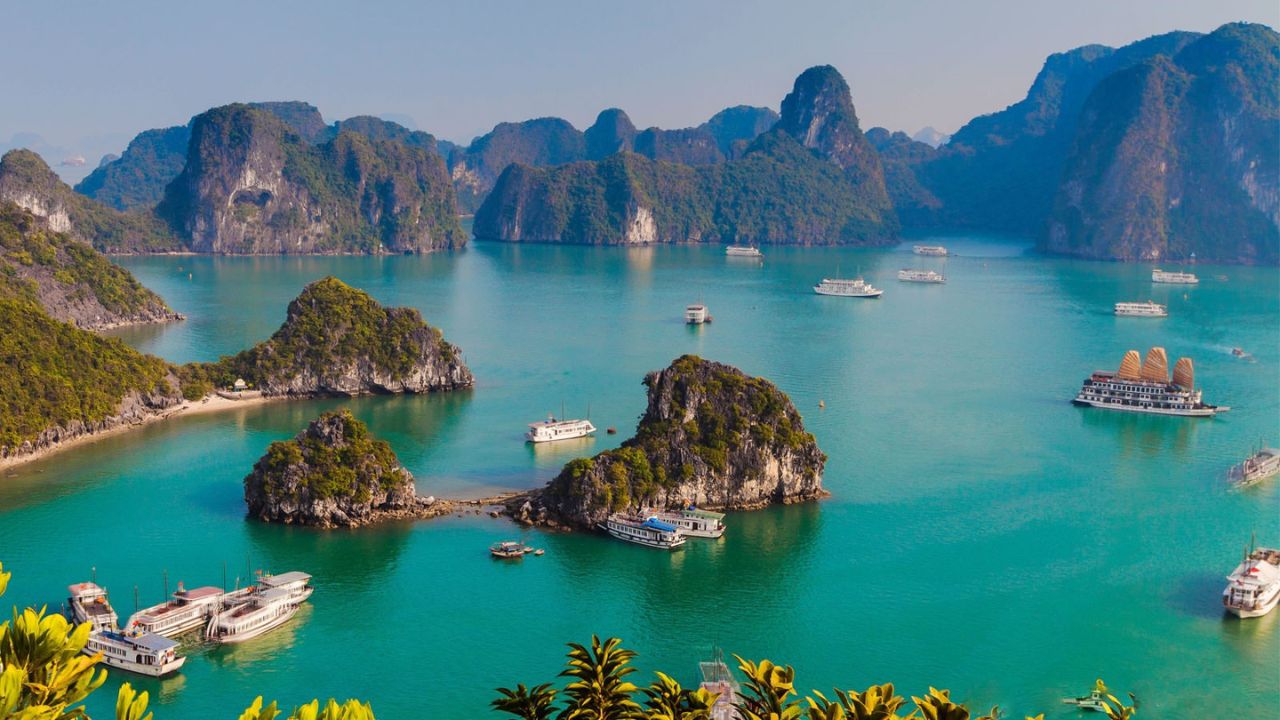
A brief introduction to Ha Long Bay
Ha Long Bay lies in Quang Ninh Province, in the northeast of Vietnam, about 165km from Hanoi. Covering an area of 1,553 km², the bay boasts more than 1900 islands and islets, mostly limestone and shale. Each island has its own unique shape, such as Dragon Islet, Incense Burner Islet, and Fighting Cocks Islet.
The Bay enjoys a tropical monsoon climate with hot, humid summers and mild winters, making it an attractive destination all year round. With its majestic yet poetic scenery, Ha Long Bay is truly a masterpiece of nature.
The name “Ha Long” means “Descending Dragon”, inspired by an ancient legend. According to folklore, when foreign invaders threatened the land, the Jade Emperor sent Mother Dragon and her children to help the Vietnamese people. The dragons spat out pearls, which turned into thousands of limestone islands, blocking the enemy’s advance. After victory, the dragons chose to remain on earth, creating today’s magnificent bay.
Beyond legend, archaeological findings also connect the name to the ancient Ha Long culture, proving that humans have inhabited this area for thousands of years. Thus, the name Ha Long carries both cultural and historical significance.
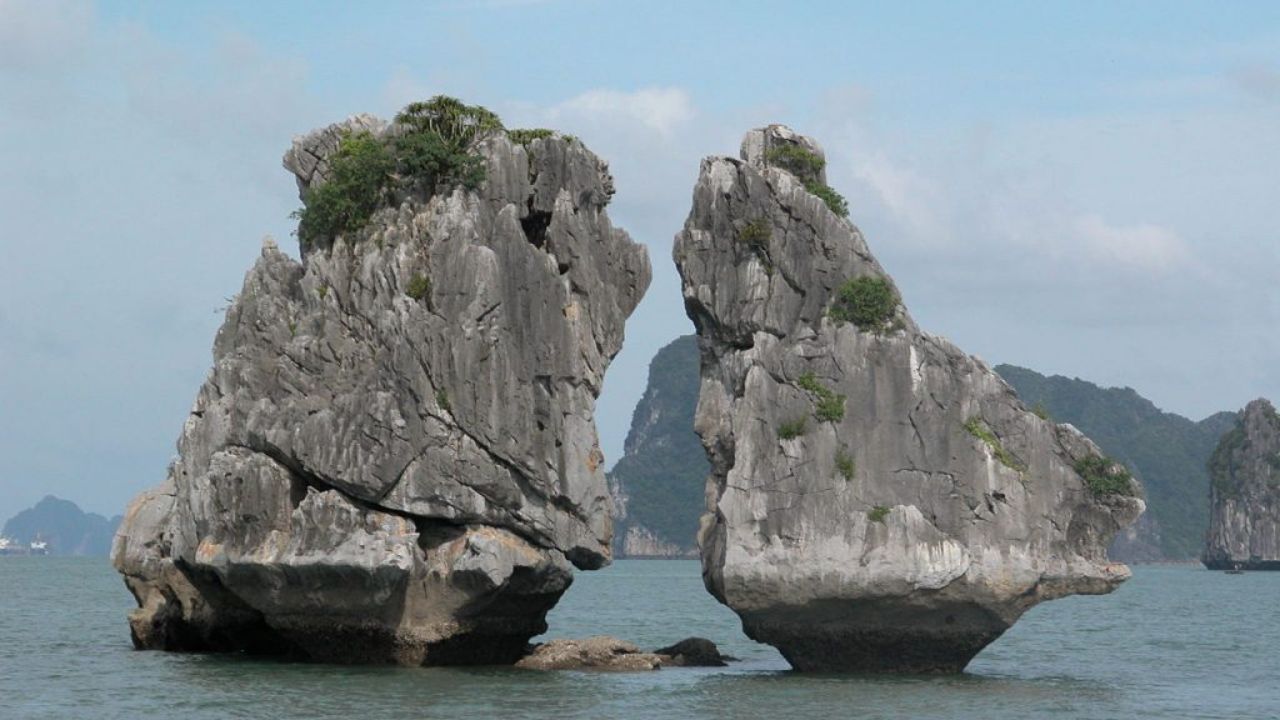
Origin of the Name “Ha Long”
Ha Long Bay is not only a feast for the eyes but also a treasure of biodiversity. It is home to hundreds of fish species, coral reefs, seaweed, and rare marine creatures such as dolphins, seals, and whales. The bay also features mangrove forests, tropical jungles, and dazzling caves formed over millions of years - including Sung Sot Cave, Thien Cung Cave, and Dau Go Cave. The harmony of geology, landscape, and biology makes Ha Long Bay a priceless “living natural museum” of Vietnam and the world.
To make your trip more complete, below are the destinations not to be missed when you set foot in Ha Long Bay.
Known as the gateway to Ha Long Bay, Tuan Chau Island offers modern infrastructure with the region’s largest man-made beach, amusement parks, a water music theater, and luxury resorts. It also serves as the main harbor for cruise ships exploring the bay.
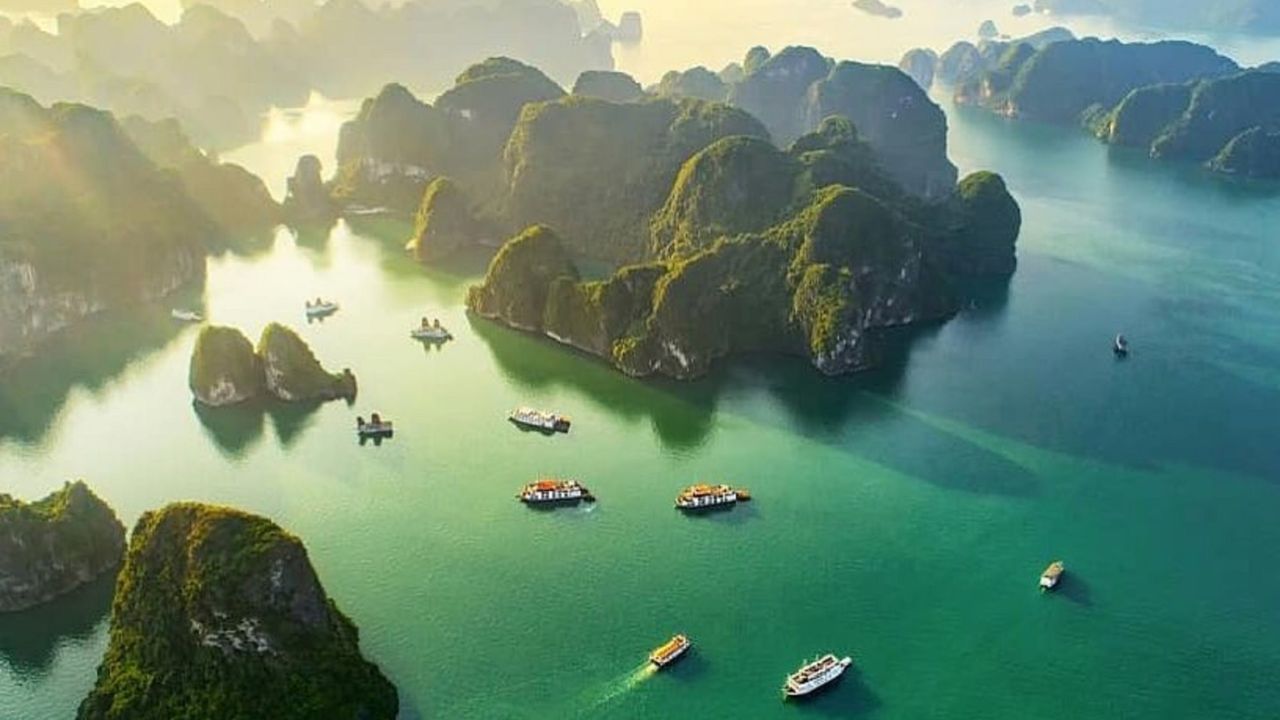
Must-Visit Attractions in Ha Long Bay
True to its name, Sung Sot Cave amazes visitors with its enormous chambers and bizarrely shaped stalactites resembling dragons, phoenixes, elephants, and soldiers. Cleverly designed lighting enhances the cave’s mystical beauty, making it one of the most stunning caves in Ha Long Bay.
Covering 10,000 m², Thien Cung Cave dazzles with countless stalactites and stalagmites arranged as if in a natural palace. Colored lights reflect on the formations, creating a magical scene tied to legends of the Dragon King.
This pair of limestone rocks, each about 10 meters tall, face each other in the middle of the sea, resembling two roosters in combat. As the symbol of Ha Long Bay, Fighting Cocks Islet is most enchanting at sunrise or sunset.
Nestled at the foot of limestone cliffs, Cua Vạn Village presents the cultural soul of Hạ Long Bay. Floating houses, bamboo boats, and the daily life of fishermen bring a unique experience. Visitors can row boats, talk to locals, and enjoy fresh seafood while discovering the simplicity and resilience of this traditional way of life.
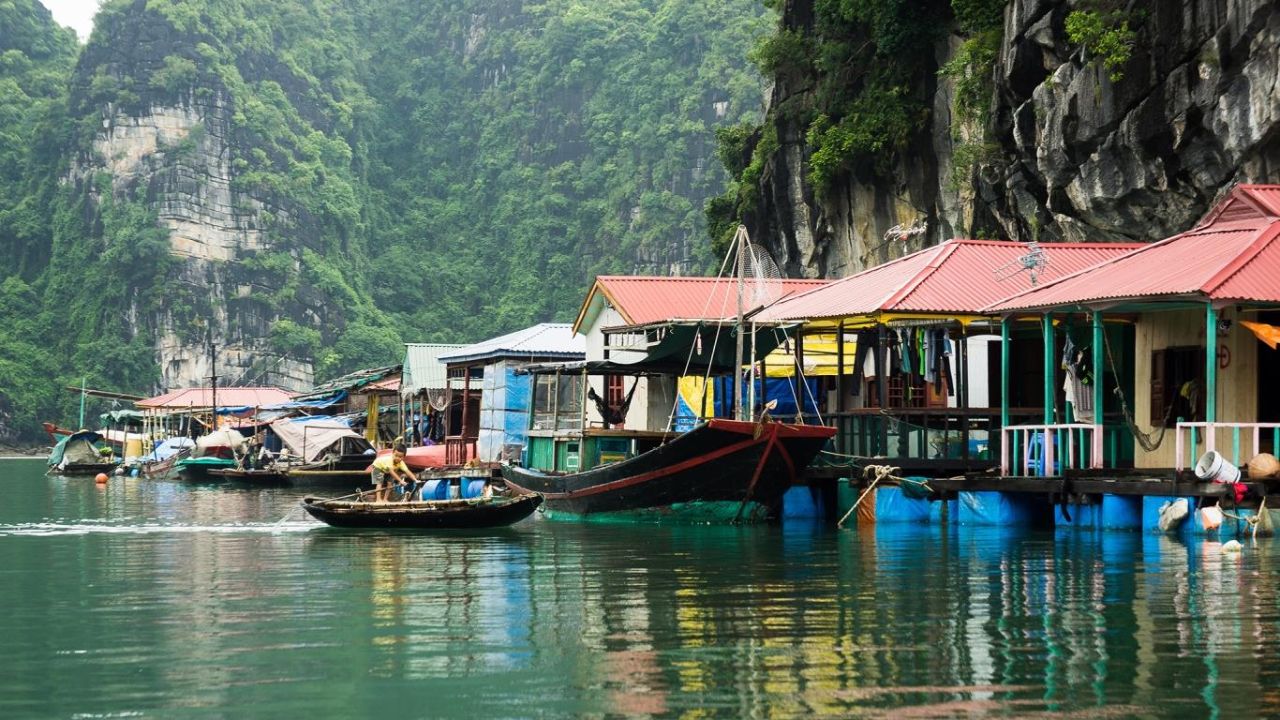
Cua Van Fishing Village
Not only possessing beautiful scenery, Ha Long Bay also offers countless attractive activities for tourists.
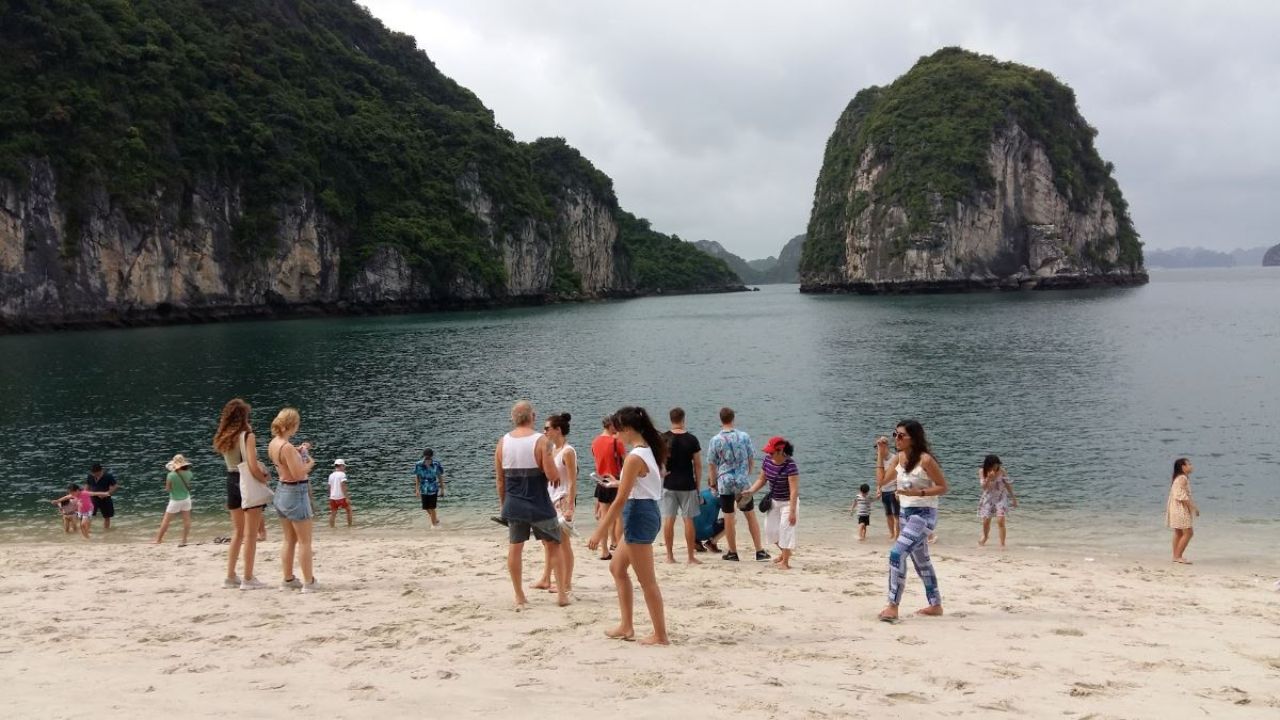
Swimming & Beach Sports
Ha Long cuisine is a harmonious blend of sea flavors and local creativity. Don’t miss specialties like Ha Long squid cakes, peanut worms (sa sung), horseshoe crab, grilled clams, tu hai (geoduck), and oysters with scallion oil. Each dish tells a story of the sea and the people who call it home.
To make your trip smoother and more complete, visitors should note the following experiences:
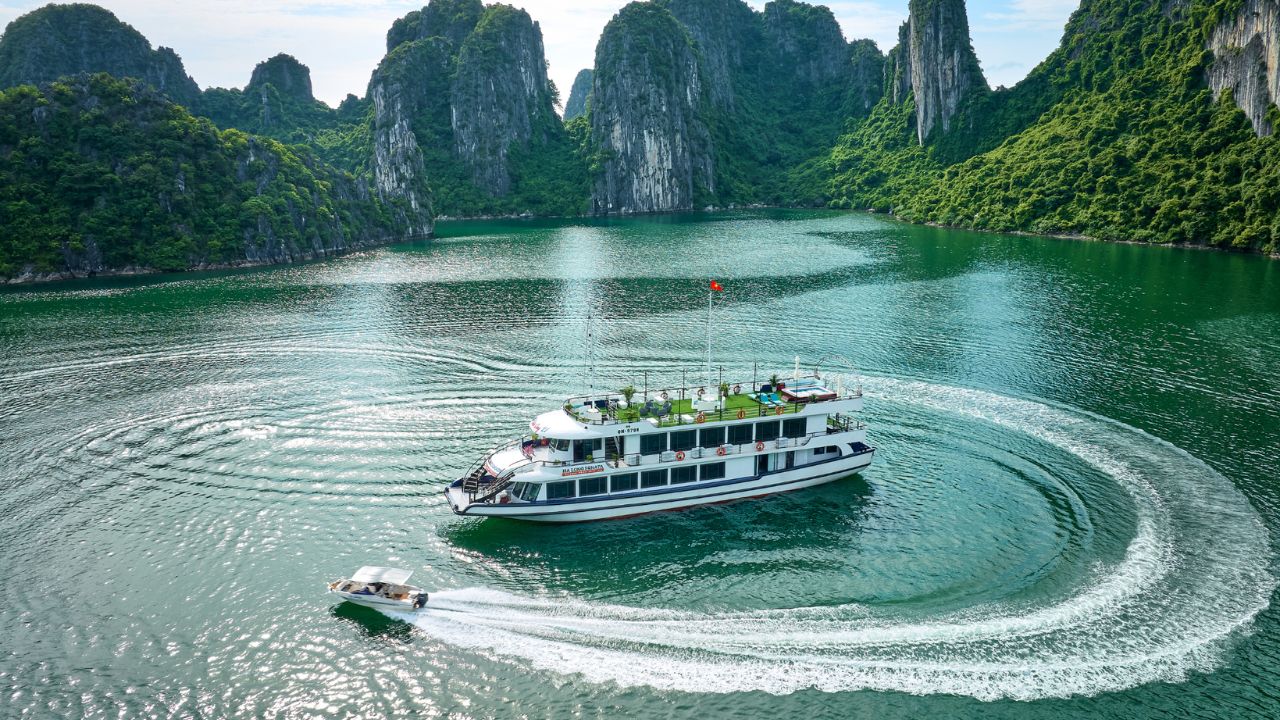
Essential Travel Tips for Ha Long Bay
Exploring Ha Long Bay is a journey to one of the world’s greatest natural wonders. With its majestic landscapes, diverse ecosystem, rich cultural heritage, and delicious cuisine, it is truly a dream destination. Whether you’re seeking relaxation or adventure, Hạ Long Bay promises unforgettable memories and stands as a proud symbol of Vietnam’s natural beauty.
Maybe you are interested
